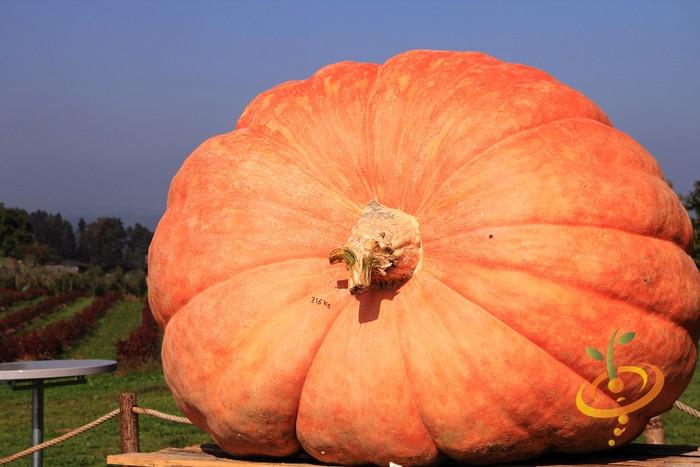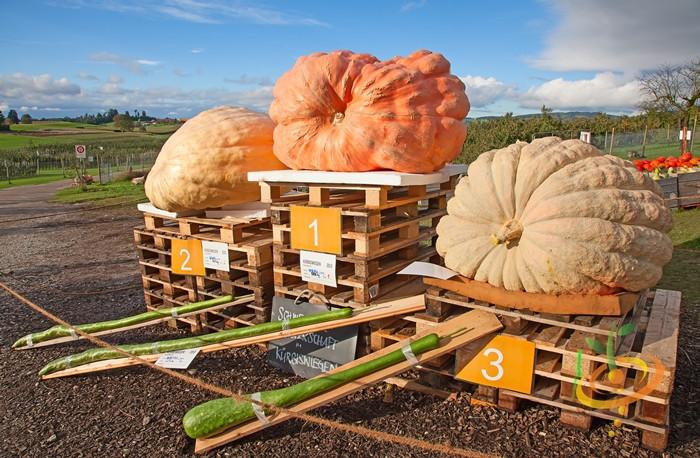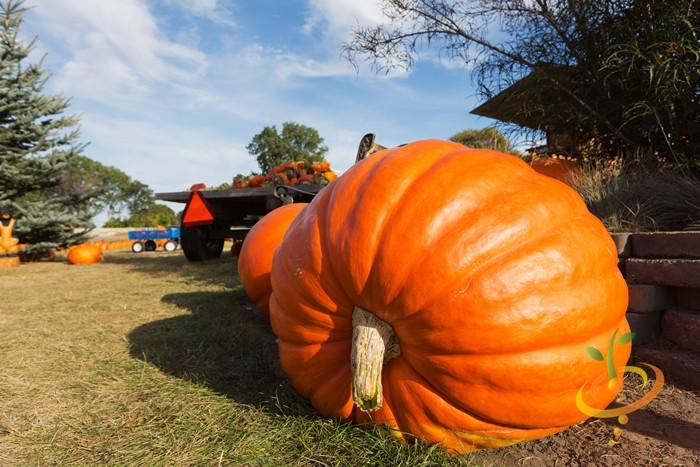
Do you want to grow MASSIVE pumpkins? Are you interested in making this a new hobby or perhaps you’re wanting to take it to the “next level” and start entering competitions? Either way, we’ve gathered some of the best tips and tricks to help you start growing MASSIVELY large, competition-size pumpkins right in your own backyard!
First, you want to make sure you’re starting with the correct type of pumpkin. Sure, you can always bend genetics, slightly, but you’ll have better success if you choose an heirloom pumpkin that organically grows larger than most varieties. We highly recommend if you’re just getting started to try the BIG MAX or ATLANTIC GIANT variety.

Atlantic Giant Pumpkin – The Atlantic Giant pumpkin has been known to grow over 1,500 pounds! Without special treatment, the Atlantic Giant Pumpkin can grow up to 200 to 300 pounds – easily.

Big Max Pumpkin – The Big Max pumpkin produces an extremely large (60″+ diameter and weighs 100+ lbs.) bright orange pumpkin.
Once you have chosen your variety of pumpkin, you’ll need ideal growing conditions. Depending on your location, garden type, and grow zone many factors will come into play but let’s start off with the basics:
Temperature:
- In order to germinate properly, pumpkin seeds generally need temperatures between 65 and 75 degrees F.
- Ideal soil temperatures should fall into the 70-90 degrees F. range.
Sunlight:
- Pumpkins need A LOT of sunlight to grow and develop. Pick a location with FULL SUN, and stay away from anything that gets partial shade.
Soil Quality:
- Not only is the type of pumpkin you choose to grow, and the location important, but let’s not skip over one of the MOST important factors to growing a successfully LARGE pumpkin…the soil! Your pumpkins will do best if you choose a location that has either a slightly acidic or neutral soil. Make sure the ground is loose and drains well. Loam soil is best.
Spacing:
- If you’re planning on growing a LARGE pumpkin, keep in mind that you’ll need up to 1200 sq. feet for just ONE pumpkin! Spacing is everything, so don’t crowd them together. The larger you want to grow, the further apart the spacing should be.
Watering
- The larger the pumpkin gets, the more water it will need! It’s not uncommon for competition-sized pumpkins to use up to 500 gallons of water per week! After watering, the ground should be evenly moist, but never soggy. Like many fruits, try to keep the water off the foliage of the plants. This will discourage disease.
Feeding / Fertilizing:
- Early in spring, you’ll want to add something like aged manure or compost into your soil. In the fall, lime can help bring the soil back to neutral if it’s more on the acidic side. During your growing season, apply aged compost or manure to fertilize.
- Fertilize with fish emulsion early on, and then as the pumpkin starts to develop, switch to phosphorus or bone meal. Near the end of the growing season move onto potassium or greensand.
Growing/ Harvesting:
- Pinch off all flowers in the beginning to encourage growth. Until your plant reaches about 10 feet long, there should be no flowers left on the plant. Pinch. Pinch. Pinch.
- Once your vine is 10 feet long, allow it to start setting fruit. Remove ALL but the largest pumpkins for the next few weeks.
- Try placing your “strongest/largest” pumpkin on a piece of cardboard to help repel any insects that live in the soil.
- Stake down any large vines or bury them to help keep them from rolling.
- Keep the area you’re growing in “weed-free” so your pumpkin plant won’t have to compete for nutrients in the soil.
- As the pumpkin matures, keep it shaded to help prevent it from overheating or being scalded by the sun. This also will help prevent splitting or cracking.
- Harvest your pumpkin RIGHT before your first frost, and if you’re planning on entering any competitions be careful to harvest before any cracks appear as this might disqualify you and your pumpkin.
Ready to start growing MASSIVE PUMPKINS? SHOP the BEST SEEDS HERE!






















